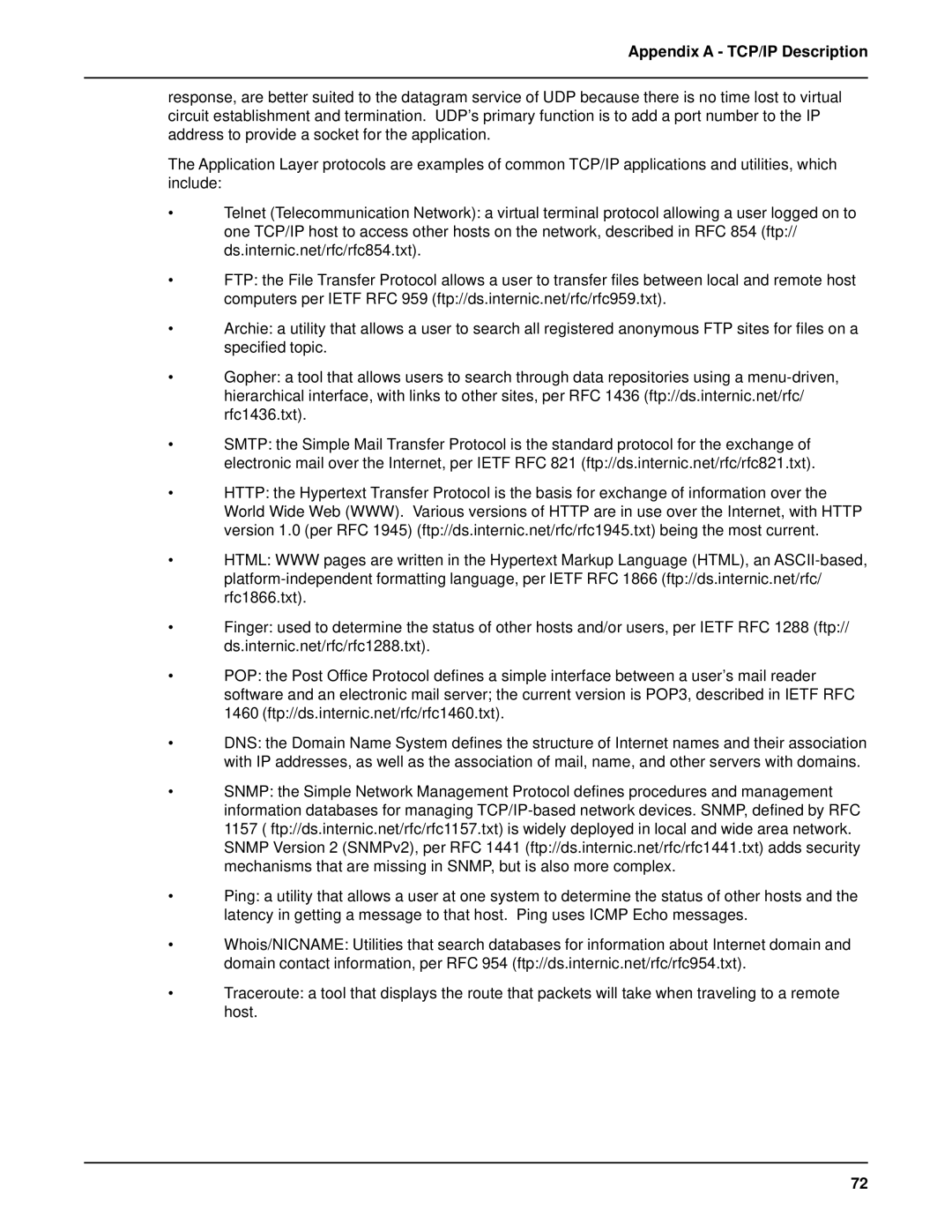
Appendix A - TCP/IP Description
response, are better suited to the datagram service of UDP because there is no time lost to virtual circuit establishment and termination. UDP’s primary function is to add a port number to the IP address to provide a socket for the application.
The Application Layer protocols are examples of common TCP/IP applications and utilities, which include:
•Telnet (Telecommunication Network): a virtual terminal protocol allowing a user logged on to one TCP/IP host to access other hosts on the network, described in RFC 854 (ftp:// ds.internic.net/rfc/rfc854.txt).
•FTP: the File Transfer Protocol allows a user to transfer files between local and remote host computers per IETF RFC 959 (ftp://ds.internic.net/rfc/rfc959.txt).
•Archie: a utility that allows a user to search all registered anonymous FTP sites for files on a specified topic.
•Gopher: a tool that allows users to search through data repositories using a
•SMTP: the Simple Mail Transfer Protocol is the standard protocol for the exchange of electronic mail over the Internet, per IETF RFC 821 (ftp://ds.internic.net/rfc/rfc821.txt).
•HTTP: the Hypertext Transfer Protocol is the basis for exchange of information over the World Wide Web (WWW). Various versions of HTTP are in use over the Internet, with HTTP version 1.0 (per RFC 1945) (ftp://ds.internic.net/rfc/rfc1945.txt) being the most current.
•HTML: WWW pages are written in the Hypertext Markup Language (HTML), an
•Finger: used to determine the status of other hosts and/or users, per IETF RFC 1288 (ftp:// ds.internic.net/rfc/rfc1288.txt).
•POP: the Post Office Protocol defines a simple interface between a user’s mail reader software and an electronic mail server; the current version is POP3, described in IETF RFC 1460 (ftp://ds.internic.net/rfc/rfc1460.txt).
•DNS: the Domain Name System defines the structure of Internet names and their association with IP addresses, as well as the association of mail, name, and other servers with domains.
•SNMP: the Simple Network Management Protocol defines procedures and management information databases for managing
•Ping: a utility that allows a user at one system to determine the status of other hosts and the latency in getting a message to that host. Ping uses ICMP Echo messages.
•Whois/NICNAME: Utilities that search databases for information about Internet domain and domain contact information, per RFC 954 (ftp://ds.internic.net/rfc/rfc954.txt).
•Traceroute: a tool that displays the route that packets will take when traveling to a remote host.
72
